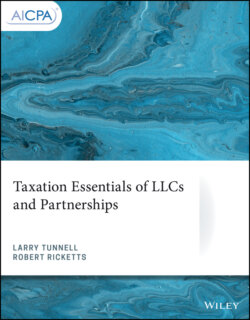Читать книгу Taxation Essentials of LLCs and Partnerships - Larry Tunnell - Страница 24
Overview of the basic framework of partnership taxation
ОглавлениеThe partnership tax framework allows partners and partnerships wide latitude in structuring their companies and in dealing with one another. Formation of a partnership, like formation of a corporation, is generally a tax-free transaction. Indeed, the rules governing partnership formation are even more lenient than those governing corporate formation, in that there is no requirement that contributing partners have “control” of the partnership in order for the transaction to be tax-free. Also, like corporate formations, the partners' bases in assets contributed to the partnership carry over to the partnership (that is, the partnership takes a “carryover” basis in contributed properties), and the partners' initial bases in their partnership interest is generally equal to the basis of cash and other property contributed to the partnership in exchange for that interest. (However, a partner's basis in his partnership interest is also increased by his share of partnership liabilities, unlike the shareholder or corporation treatment of liabilities.)
A major difference between partnerships and corporations, of course, is that the taxable income of the partnership is taxable to the partners, rather than to the partnership itself. Therefore, the reporting process by which the partnership's taxable income is reported to the IRS, and to its partners, is rather complex. Moreover, the process of accounting for partnership income is more complex in that the partners must account for their shares of partnership income or loss each year, whether or not any distributions of that income are received or additional contributions are made by the partners.
Another major difference between partnerships and corporations is the treatment of distributions to partners. Because the partners are taxed directly on their shares of partnership income, distributions of that income are generally tax-free. Most distributions are treated as decreases in the basis of their partnership interests rather than as taxable income. To ensure that the distribution to a partner of his or her share of partnership income does not inadvertently trigger recognition of taxable gain, partners are required to adjust their bases in their partnership interests to reflect their shares of the partnership's income or loss each year. The result of these basis adjustments is that a partner will generally have sufficient basis to absorb a subsequent distribution of his or her share of partnership profit without triggering gain recognition.
